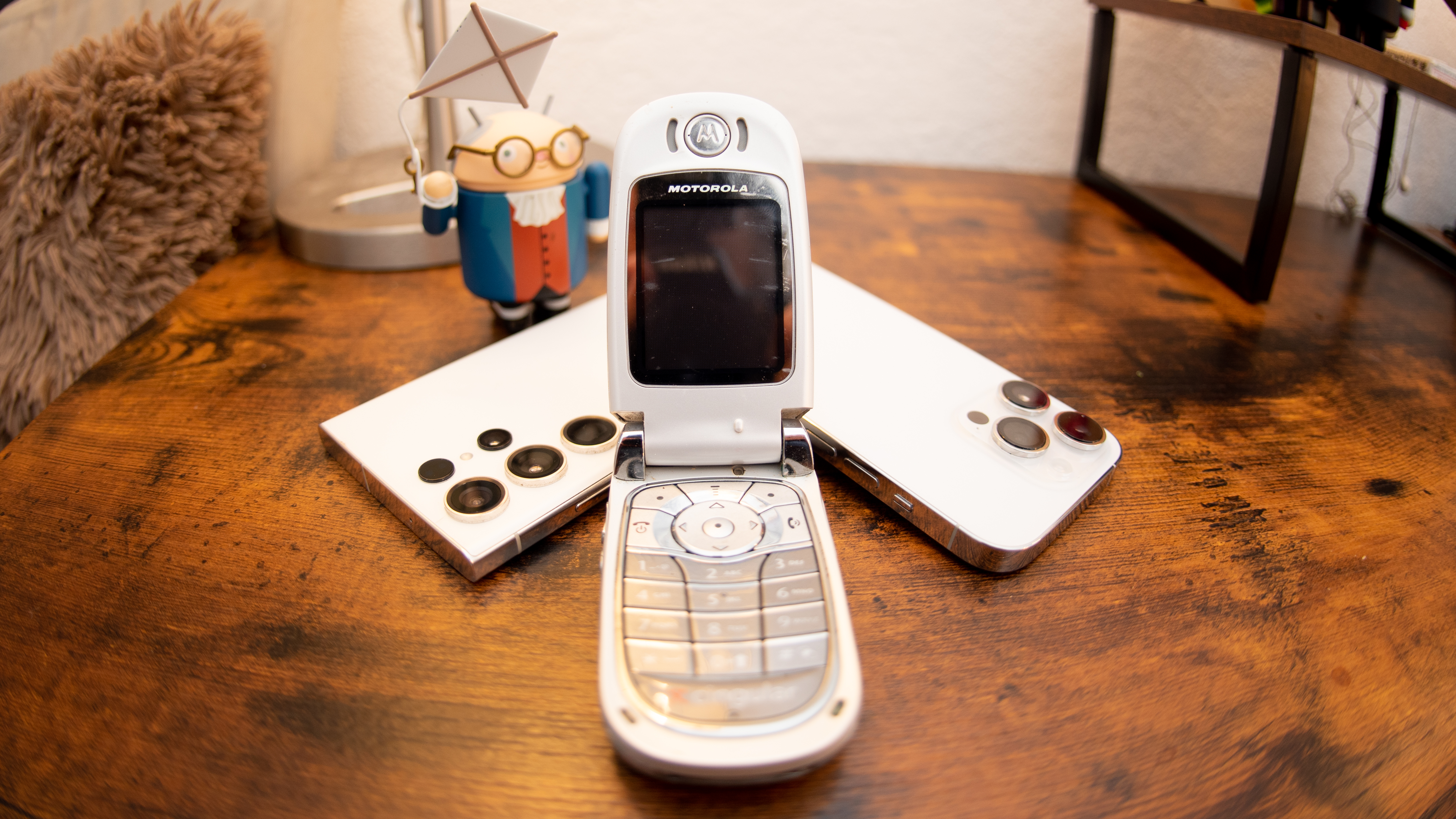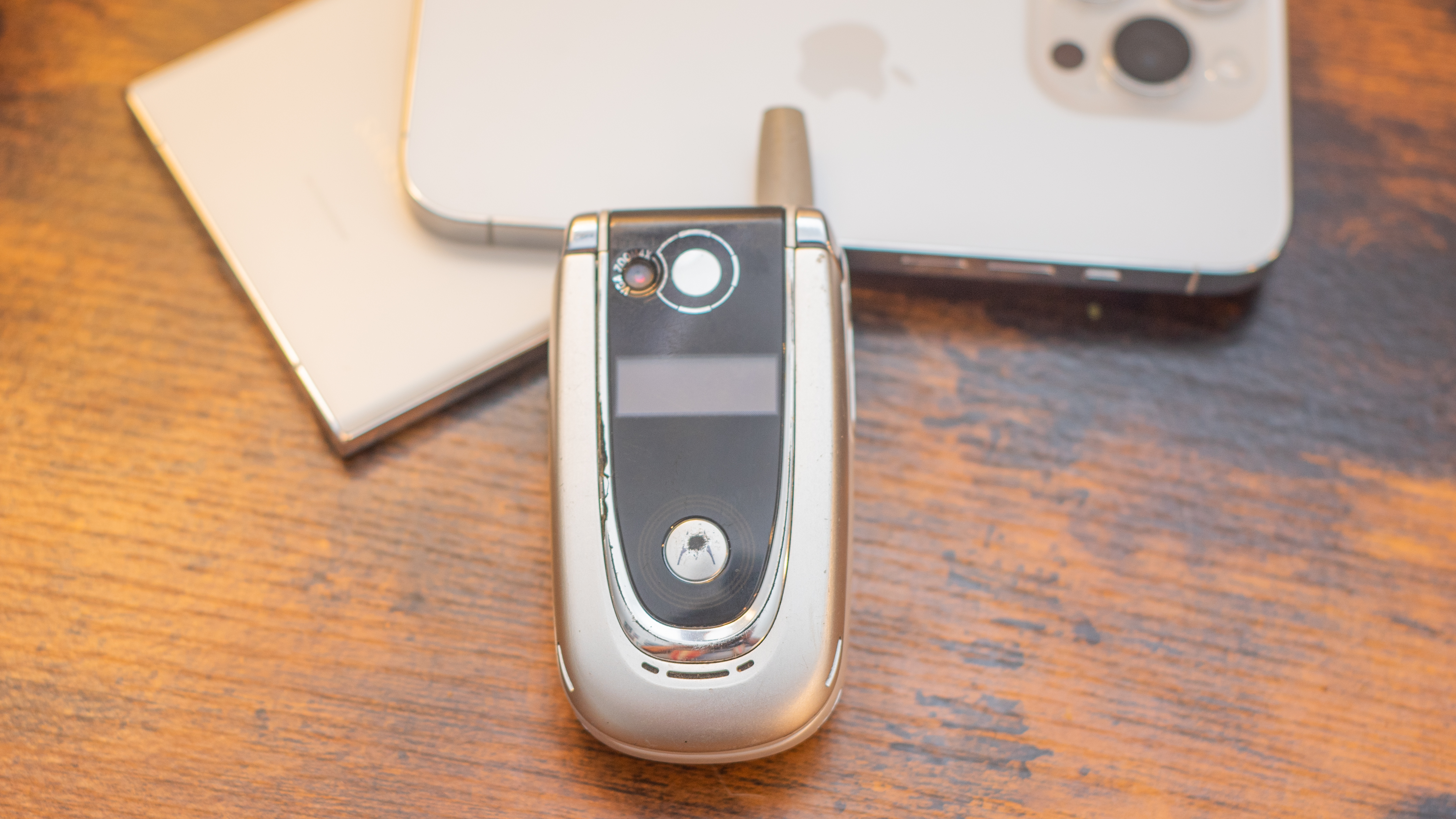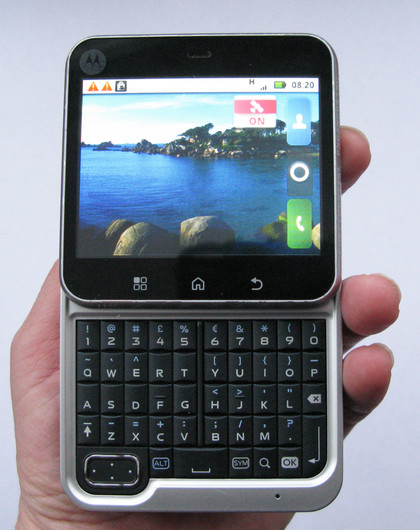
Motorola taunts me; it taunts all of the US. Friends at Moto sent me word of the Motorola Edge 40 Pro, just to let me know I can’t buy one. It’s coming to Europe; it’s coming to Latin America. No US plans. I used to covet Motorola phones. I owned a couple. Now I just read about them on my iPhone 14 Pro and Galaxy S23 Ultra. Motorola was a flagship brand and a crafty competitor. I wish it would remember its roots and offer us a decent iPhone alternative.
My first cool cell phone was a Motorola V600, a flip phone from before the days of the Motorola RAZR. I still have it, with its thick leather holster from 2003. Mercedes offered this phone as a car accessory. Back in the day, this was a very cool flip phone, one of the best phones I’ve owned.

My favorite thing about the V600 is the LED circle for notifications. I could customize the colors for different contacts. It also had angelically clear ‘polyphonic ringtones’ at a time when most phones gave up chirps and beeps that sounded as pleasant as a bedside alarm clock.
My Moto V600 has a color display, a VGA camera (around 0.3MP), and a nubby little antenna. I upgraded to a Motorola RAZR V3 around 2005, then to smartphones forever after.
Along came a Motorola RAZR
Oh, that RAZR. I loved the RAZR, easily first among the best Motorola phones. I can’t overstate how dramatically the Moto RAZR V3 shook up mobile tech. It was the first mobile that was truly, incredibly cool. The Motorola StarTAC phone was an enviable early flip phone, but the RAZR was dazzling.
The Motorola RAZR was impossibly thin when open. The sharp upper display closed seamlessly into the chin of the keypad. The number keys were laser cut from a single sheet of metal. The design and materials were years ahead of any other phone I’d seen.
I was an English teacher back then, so I couldn’t afford a RAZR when the phone launched, but the US cellular carriers soon offered deals that made it affordable with a contract agreement. I picked one up in matte black, even though I was making a public high school teacher’s salary. I was the coolest kid in the class.
Motorola's long road to mediocrity
What happened to Motorola? Today, Motorola is still a top 5 phone manufacturer in the US by volume, but it’s a very distant placement. Apple and Samsung jockey for the lead throughout the globe, and the rest of the phone makers fight over the scraps of customers who somehow reject the most popular models.
What happened to Moto? The Motorola of today isn’t the same company as the RAZR-maker of the past. Google bought Motorola in 2011, then sold it to Lenovo in 2014. The company that made the phone everyone desired now sells mostly mid-range and bargain Android phones in the US market, and you can’t find them in every US carrier store.

This didn’t happen quickly. Motorola held on long past the RAZR. When the BlackBerry was the king of the prehistoric smartphone world, Motorola made one of the best competing devices, a Windows Mobile phone with a keyboard called the Motorola Q. It was thinner and more capable than a BlackBerry, with a more solid design. You could buy one on every major US carrier, if your job didn’t buy one for you.
When Android dawned, it seemed like Motorola would take an early lead, thanks to robust support from Verizon, then the largest US cellular carrier. The Motorola Droid phones were ubiquitous in marketing and earned praise in reviews.
There were also unfortunate flops, like the Motorola Flipout and the Motorola Flipside, one of the worst phones I’ve ever used. Motorola launched scores of smartphones across a number of brands, never focusing on one lineup.
Eventually, Motorola lost its way. The iPhone 4 raised the bar for smartphone design, and you’d think Motorola, with it’s RAZR chops, would compete with a quick comeback, but it never materialized. There was a Droid RAZR family of phones that didn’t stand out from the pack of generic also-ran Androids.
Years later, when Samsung finally realized that design was just as important as features and specs, Motorola was already far behind. It never launched a phone that could compete with the Galaxy S6 and Galaxy S6 edge, the sleek glass and metal sculptures that sparked a renaissance for Samsung’s phone brand.

Bring back the spirit of the RAZR, not just the brand
The path seemed clear to phone fans like me. Moto should do what it does best. Make a device with an amazing design that looks laser cut from a single piece of metal. Make a phone that is a solid and reliable competitor to the big name everybody owns. Make a new RAZR. Make a Q. Heck, make a better Droid, for crying out loud.
It took more than a decade for Moto to bring the RAZR brand and style to Android. It took just as long for us to regain some excitement about Motorola phones, with flagship models like the Motorola Edge 30 Ultra truly impressing our UK editors. There is still a way to go, but I have hope.
Sadly, what these two phones have in common is that I can’t buy them
The first hope is that Motorola’s parent Lenovo is a solid, established company with a large portfolio of technology and development. There’s evidence of real interest in using the Motorola arm to create innovative new products, not just push out also-ran phones with the same components as every other Android.
The Motorola RAZR foldable smartphone is still evolving, and it may have lost its signature look with the last generation, but at least Lenovo hasn’t entirely given up. The Lenovo ThinkPhone by Motorola is the sweetest-looking durable phone I’ve ever seen, and its MIL-STD 810H rating is a design feature I hope every other phone copies in the future.

Sadly, what these two phones have in common is that I can’t buy them. The RAZR isn’t available in the US, not this generation. Motorola will happily sell me the last-generation RAZR 2020, and it’s even priced right to forgive its flaws. No new RAZR for me.
I also can’t buy the ThinkPhone, it’s a B2B-only model. It’s likely easier to cut production costs on a device when most of the sales are predictable volume deals with a long delivery window. I still wish Motorola would bring a durable smartphone to the masses with the ThinkPhone’s style.

I’m sure Motorola and Lenovo have great business reasons why I can’t buy any of the coolest phones Motorola makes, and I’d be naive to suggest they’d automatically succeed in the US market. There is strong competition, and besides the phones themselves, Apple and Samsung have a much better reputation for long-term device support than Motorola.
That doesn’t mean Motorola should give up on the US market. I want these great new phones and I won’t stop asking for them. I’m tired of Apple and Samsung releasing new phones that look exactly like last year’s model. Reminding these companies of what a potent Motorola can do will inspire better phones for everyone.







